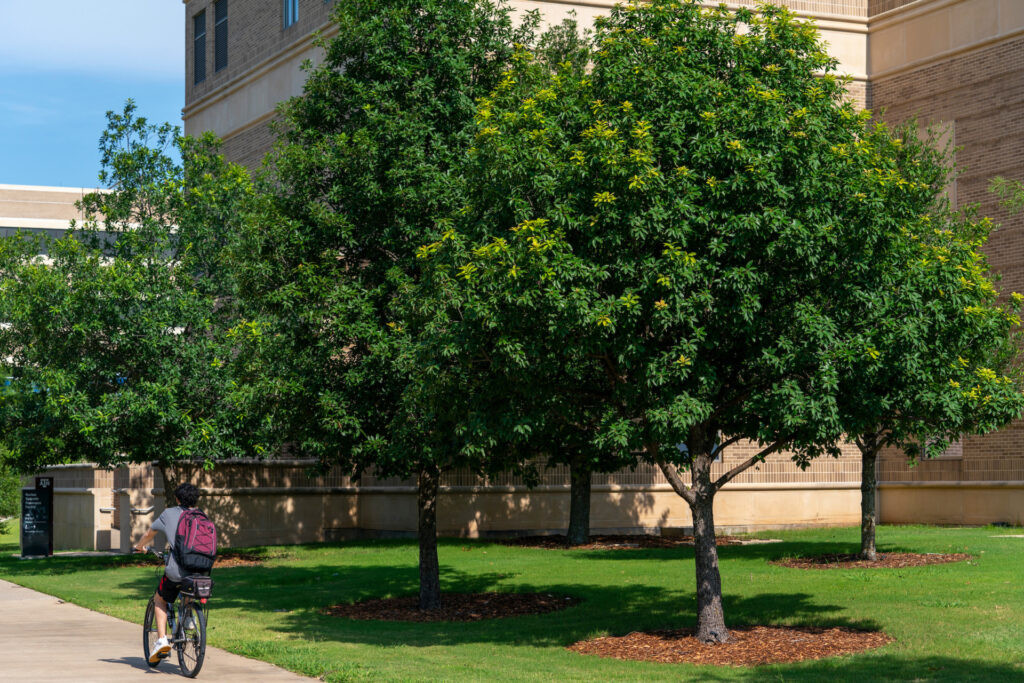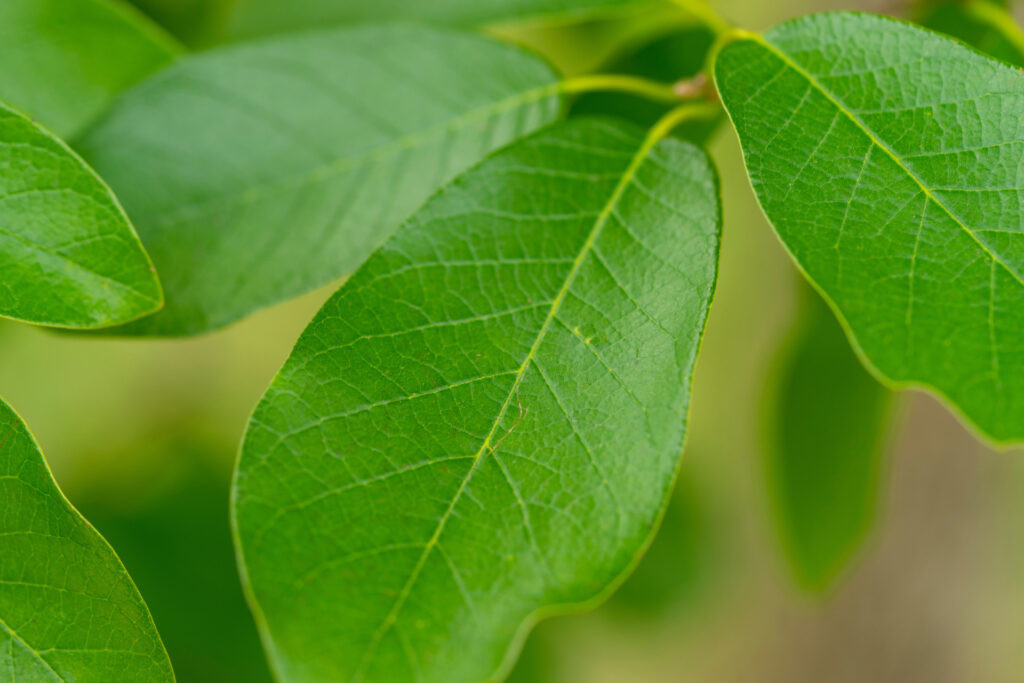Looking for a resilient and beautiful shade tree that thrives in challenging climates? The Mexican White Oak, a Texas Superstar plant, might be the perfect choice for your landscape. This remarkable tree, also known as the Coahuila oak, Monterrey oak, or net-leaf white oak, is rapidly gaining popularity across Texas and beyond for its adaptability, beauty, and low-maintenance nature.
 Mexican White Oak Trees at Texas A&M University Campus
Mexican White Oak Trees at Texas A&M University Campus
Image: A picturesque group of mature Mexican White Oak trees graces the Texas A&M University campus, showcasing their suitability as shade trees in urban environments.
According to Dr. Mike Arnold, a horticulturist at Texas A&M AgriLife Research and a member of the Texas Superstar executive board, the Mexican White Oak is proving to be an exceptional addition to the Texas nursery trade. Its ability to withstand hot, dry, and windy conditions makes it an ideal selection for homeowners, landscapers, and city planners seeking dependable and attractive trees.
This native tree, with origins in both Texas and Mexico, was discovered in Val Verde County, Texas, in the 1990s. Since then, it has captured the attention of plant enthusiasts for its unique combination of hardiness and aesthetic appeal. The Mexican White Oak stands out with its variable lobed foliage, presenting a lush green canopy that sometimes displays captivating blue hues. Its growth habit evolves from an upright oval shape in its youth to a medium-sized tree at maturity, perfectly proportioned for providing shade in residential streets, parks, and home gardens.
One of the defining characteristics of the Mexican White Oak is its canopy. It ranges from tardily deciduous in colder climates to semi-evergreen in warmer regions, offering extended seasonal interest. This hardy tree is known for its resilience, standing strong against the intense Texas heat and fluctuating winter temperatures. Dr. Arnold emphasizes the tree’s impressive performance even in USDA zone 7 and warmer areas of zone 6, highlighting its increasing importance in the Texas plant landscape.
The designation as a Texas Superstar is not easily earned. Plants must demonstrate exceptional performance for growers throughout Texas, be easy to propagate, and ensure widespread availability at reasonable prices. The Mexican White Oak has met and exceeded these rigorous standards, solidifying its place as a top choice for Texas landscapes.
Optimal Growing Conditions for Mexican White Oak
Mexican White Oak trees flourish in full sun and well-drained soils. Their robust nature allows them to thrive in exposed locations, even those with reflected heat, minimal watering, and persistent winds. While specific salinity tolerance levels are still under investigation, these trees demonstrate adaptability to a broad spectrum of soil pH levels and moderate salinity, especially when irrigation is delivered via drip systems rather than overhead sprinklers.
 Close-up of Mexican White Oak Leaves
Close-up of Mexican White Oak Leaves
Image: Detailed view of Mexican White Oak leaves, showcasing their distinctive lobed shape and texture, key identifying features of this adaptable shade tree.
Typically reaching a mature height of 35-45 feet, Mexican White Oaks can achieve heights of up to 60 feet in optimal conditions. Their canopy spread, typically two-thirds to equal their height, provides excellent shade for both single and double-story homes, creating a harmonious balance of shade and visual appeal in any landscape design.
Beyond its aesthetic qualities, the Mexican White Oak contributes positively to the environment. Dr. Arnold points out its role in soil stabilization and as a valuable source of acorns, providing sustenance for wildlife during the fall season. This deciduous to semi-evergreen perennial offers year-round beauty. Planting is recommended in the fall in warmer areas and in early spring and summer in cooler regions.
Despite its relatively recent introduction to widespread cultivation, the Mexican White Oak has quickly become favored for its unwavering performance in the face of environmental challenges. Notably, it exhibits good tolerance to humid climates with minimal foliar diseases, a trait uncommon in xeric plants transplanted to higher rainfall areas like the upper Gulf Coast.
While extensive planting has only occurred in the last two decades, a short period for a long-lived tree species, its consistent performance through environmental variations underscores its promise as a valuable addition to landscapes in the South-Central U.S., particularly in Texas.
Dr. Arnold also notes the variability in canopy shapes, foliage color, and semi-evergreen characteristics among Mexican White Oak genotypes. This diversity presents exciting opportunities for ongoing trials and breeding efforts aimed at developing improved cultivars.
Currently, the susceptibility of Mexican White Oak to oak wilt is not fully understood. Therefore, Dr. Arnold advises planting in locations where oak wilt is not known to be prevalent.
In conclusion, the Mexican White Oak emerges as a symbol of hardiness, versatility, and natural beauty in the world of landscaping. As Dr. Arnold aptly summarizes, it is a true “superstar” in the rich and diverse flora of Texas, offering a reliable and elegant shade solution for a variety of landscape needs.
Texas Superstar is a registered trademark owned by Texas A&M AgriLife Research. Plants are selected for the Texas Superstar designation by an executive board comprised of horticulturists from AgriLife Research, the Texas A&M AgriLife Extension Service, and Texas Tech University in Lubbock.

